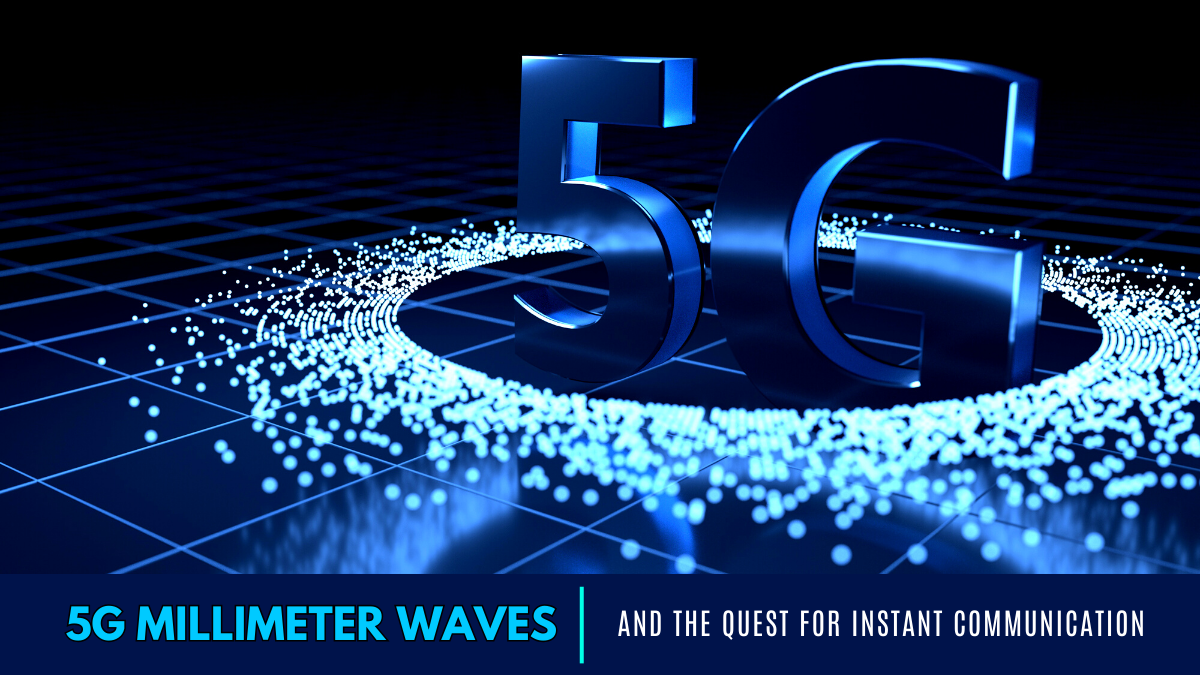In the fast-paced world of technology, the race for faster and more efficient communication has led to the development of 5G networks, with millimeter waves emerging as a key player in this quest for instant connectivity. As we stand on the brink of a new era in telecommunications, it's crucial to understand the significance of 5G millimeter waves and the potential they hold for revolutionizing the way we communicate.
1. The Need for Speed:
The demand for faster and more reliable communication has been a driving force behind the evolution of wireless networks. As our reliance on mobile devices continues to grow, so does the need for quicker data transfer rates. This is where 5G technology comes into play. Unlike its predecessors, 5G is not just an incremental improvement; it's a paradigm shift in the way we experience connectivity. At the heart of this transformation are millimeter waves.
2. Millimeter Waves Unveiled:
Millimeter waves, as the name suggests, are waves with wavelengths measured in millimeters. In the context of 5G, these waves occupy the frequency range between 30 and 300 gigahertz. This high-frequency band allows for significantly faster data transmission compared to the lower frequencies used in previous generations of wireless technology. However, harnessing the potential of millimeter waves comes with its own set of challenges.
3. Overcoming Obstacles:
One of the primary challenges with millimeter waves is their limited range and susceptibility to environmental factors. Unlike lower-frequency waves, millimeter waves struggle to penetrate obstacles like buildings and trees. Additionally, they can be absorbed by atmospheric gases, reducing their effective range. To counter these challenges, 5G networks use a combination of advanced technologies, including beamforming and small cell deployment, to optimize signal strength and coverage.
4. Empowering Smart Cities:
The deployment of 5G millimeter waves is not just about faster download speeds on our smartphones; it's a key enabler for the development of smart cities. With the ability to support a massive number of connected devices simultaneously, 5G facilitates the seamless operation of smart infrastructure, from traffic management systems to connected streetlights. The low latency provided by millimeter waves ensures real-time communication, laying the foundation for the Internet of Things (IoT) to thrive.
5. Revolutionizing Industries:
The impact of 5G millimeter waves extends far beyond the realm of consumer communication. Industries such as healthcare, manufacturing, and transportation stand to benefit significantly. Remote surgery, augmented reality applications in manufacturing, and autonomous vehicles are just a few examples of how 5G's high-speed, low-latency connectivity can revolutionize various sectors, enhancing efficiency and opening up new possibilities.
6. The Role of Edge Computing:
In the quest for instant communication, 5G millimeter waves work hand in hand with edge computing. By bringing computing resources closer to the network's edge, latency is further reduced, enabling near-instantaneous processing of data. This is particularly crucial for applications that demand real-time responsiveness, such as virtual reality and online gaming.
7. Addressing Concerns:
While the promise of 5G millimeter waves is exciting, it is essential to address concerns related to potential health risks and privacy issues. Ongoing research is being conducted to ensure that the deployment of 5G technology is safe for human health. Additionally, robust security measures must be implemented to safeguard user data and privacy in the age of interconnected devices.
Final Thought
In conclusion, the integration of 5G millimeter waves into our communication landscape marks a pivotal moment in the quest for instant connectivity. As we navigate the challenges posed by these high-frequency waves, their potential to redefine the way we communicate and interact with the digital world is undeniable. From empowering smart cities to revolutionizing industries, 5G's impact extends far beyond faster download speeds on our smartphones.
It is a catalyst for innovation and efficiency, paving the way for the Internet of Things and a myriad of applications that demand real-time responsiveness. However, as we embrace this transformative technology, it is crucial to address concerns and ensure a balance between its benefits and potential risks. The quest for high-speed internet in Michigan and beyond is intricately linked to the successful deployment of 5G millimeter waves, promising not only faster communication but also a foundation for the digital future we aspire to build.

